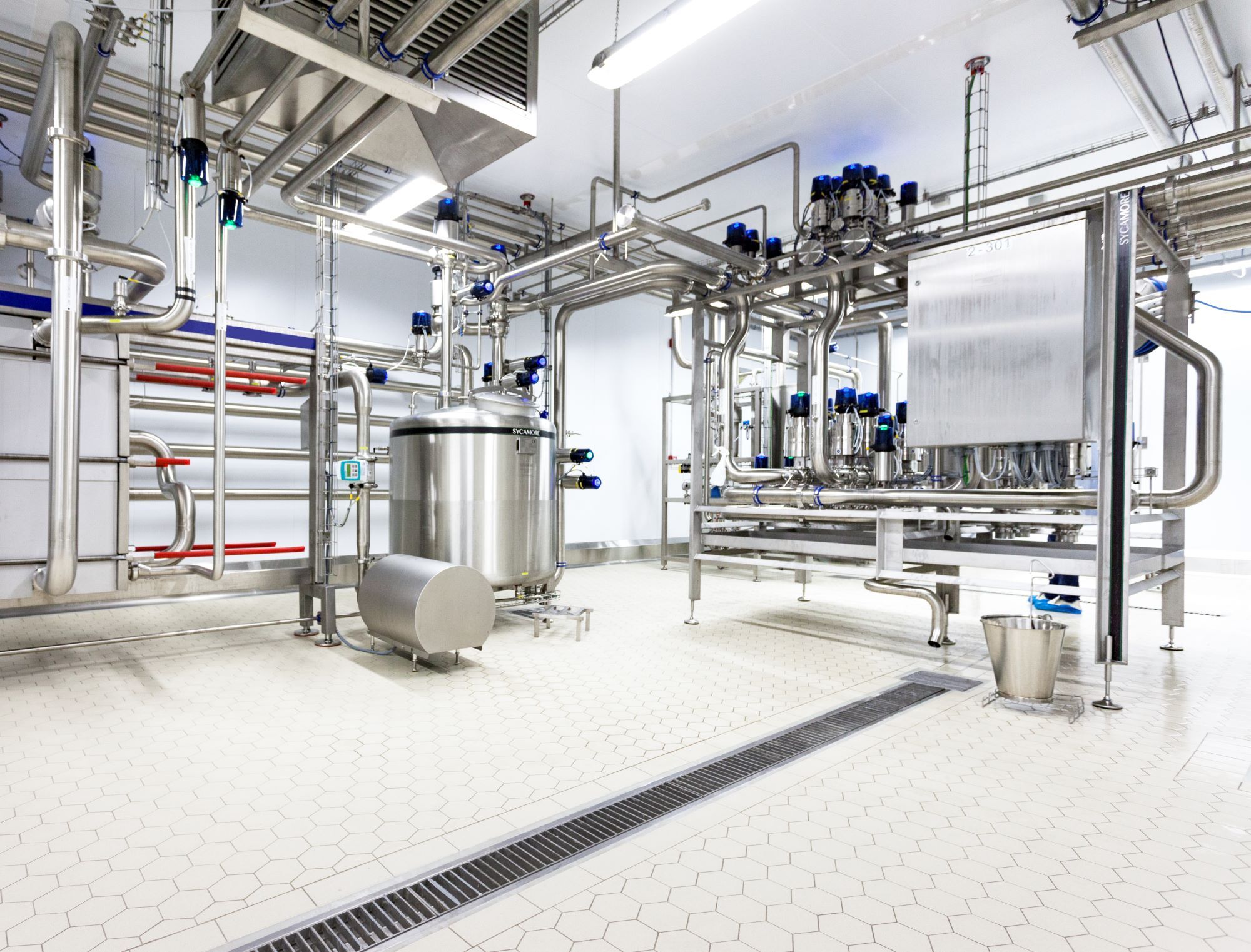What is Pasteurisation?
Pasteurisation is a process to kill pathogens within food and beverage products enabling the extension of shelf life and ensuring it is safe to consume. To achieve this, the pasteurisation process follows the same basic principles across different applications to heat products and hold them for a period of time.
While our pasteurisation systems typically follow the same basic principles of heating a product to kill bacteria, there are subtle differences depending on the product being treated and the full scope of the requirements. These systems are Ultra-High Temperature and High-Temperature Short Time (UHT, HTST). The most significant difference between these two methods is that UHT operates at a much higher temperature for a shorter period in comparison to the HTST approach to pasteurisation.
Pasteurisation is not required in all food processing systems with the likes of unpasteurised cheese being popular. However, pasteurisation does provide many benefits the main two of these being; ensuring food and beverages are safe for consumption and extending shelf life. Pathogens such as E.coli, salmonella, etc. will be killed through the process making it safe for consumption as well as the killing of a wide range of spoilage organisms to aid in extending shelf life.
Pasteurisation can come in many forms and is an ever-developing science. Heat treatment would be the most common approach but ultrasound, high pressure, microwave and many more are all methods that are being investigated or implemented for different applications.
When pasteurising a product, it is imperative to ensure gentle handling, maintaining product quality throughout the process. The design phase of pasteurisation focuses on optimising the design to allow for the gentle handling of the product, an example of this in action would be the cooling of cream in a heat exchanger where it is concurrently cooled to 8°c. The cooling of cream to this temperature with a fat content of 35 – 40% appears to be optimal, cream with higher fat contents requires higher cooling temperatures to avoid the cooling section being clogged by the product as a result of rapidly increasing viscosity. The result of this is a sharp rise in the pressure drop over the cooling section resulting in damaging the fat globules.1
What are the drawbacks of heat treatment Pasteurisation?
As with everything there are drawbacks, and the pasteurisation process is no exception to this. Depending on the intensity of the heating of the food/beverage can have an impact on the taste of food. For example, the “fresh” taste of fruit juice can be impacted when the product is subjected to a heat treatment process.
The impact of pasteurisation in the cheese production process is like that of juice in how it can affect the taste of the cheese. Traditionally unpasteurised cheeses have a more ‘earthy’ and rich taste whereas, typically in pasteurised cheese, this flavour is not present.
What are the benefits pasteurisation has given our customers?
Pasteurisers can be custom designed to incorporate the use of any ‘free’ energy sources available whether heating or cooling. One example of this was a cheese milk duplex pasteuriser that we delivered for a customer, which had the unique benefit of being able to be integrated with the Combined Heat and Power (CHP) already on site to avoid running on steam. The key benefit to this is that it reduced the required level of gas consumption for the customer that would have been used to power a boiler to produce steam.
In line with our net-zero ambitions, systems can be designed to enable customers to move toward their own net-zero goals they have set for the future. One example has enabled our customers to work towards their goal of becoming net zero by 2050. Furthermore, the other benefit this solution provides from using the hot water generated by the CHP plant is a reduction in our customers’ OPEX due to not having to generate steam. The approach to this project to deliver a sustainable pasteurisation system that meets the product requirements of our customer also enables us to achieve our own sustainability goals where we always aim to supply the most sustainable solution to our customers ensuring they are producing a high-quality product.
With all our pasteurisation systems we can take a completely holistic approach to design development. Working with customers is vital when determining the product requirements and footprint available. Internal collaboration is key to balancing mechanical and process requirements e.g. eliminating pressure drops in the heat exchanger to lower the power required from the pumps in the process.
To understand how we can work with you on your pasteurisation requirements contact the experts today.

